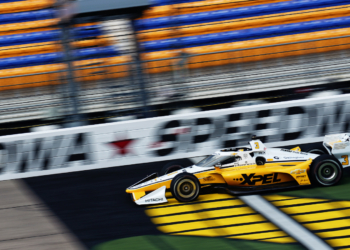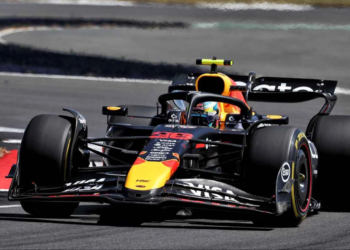Formula 1 has made the trip across the Atlantic to Montreal's Circuit Gilles Villeneuve for the Canadian Grand Prix. Motorsport Week takes a look at the key talking points ahead of this weekend's seventh round of the 2019 season.
Can Bottas halt the Hamilton show?
Lewis Hamilton is on an extraordinary run of form (12 wins and 400 points from the last 18 races) to the point where already his only realistic title rival is the man on the other side of the garage. Hamilton was imperious in Spain and Monaco to establish a 17-point buffer over Valtteri Bottas, and we’re now entering a run of races where – largely – Hamilton thrives. History suggests Hamilton kicks up a gear around this time of year (he has six wins from 11 attempts in Montreal) and claims he has been “average” so far in 2019, believing he still has to find a sweet spot with the W10. In 2017 and 2018 Hamilton found a new level that Bottas – a match in the early events – could not reach. It is, obviously, pivotal for Bottas’ title hopes that there is not a repeat of such a scenario. Hamilton has a prolific record in Montreal, and can equal Michael Schumacher’s record of seven wins, but the circuit is also a strong one for Bottas, who has not finished off the podium at the track since 2014. Mercedes boss Toto Wolff expects Bottas to have been fired-up by his Monaco defeat, so let’s expect an aggressive #77 in Montreal.
Will Canada highlight Ferrari’s strengths – and flaws?

Ferrari, courtesy of Sebastian Vettel, dominated in Canada 12 months ago, marking the most recent event at which it claimed both pole position and victory. In theory, the power-heavy layout of the Circuit Gilles Villeneuve should suit the pure grunt of the SF90, though Ferrari is now out-of-sync with Mercedes in the wake of introducing Spec 2 in Spain. The problem, though, is that the high-speed sections are punctuated by the low- and medium-speed corners which have proved to be a weakness in recent events. There are only seven proper corner complexes and any speed lost through there will be keenly felt. Ferrari has an aerodynamically efficient car but that has come at a cost of not being able to get the modified-for-2019 tyres in the right operating window. In Monaco the message from Ferrari was clear: it maintains it has a fast car whose potential is being masked by the tyres. Mattia Binotto stated it outright (as a fact rather than blaming anyone) while Vettel was only half joking when he asked if anyone had the number of “the grip guy.” Can Ferrari finally find a compromise that gets its SF90 into a happy window?
How will Racing Point fare on ‘home’ turf?
Racing Point may be based at Silverstone, uses engines produced just down the road, and is British licensed, but since the Lawrence Stroll-led buyout it has quite the Canadian flavour. Its long-term goal is to emerge as a serious player but short-term it is striving to retain its position as Formula 1’s plucky midfielder. So far, so good. It holds fifth in the Constructors’ Championship despite turning up to pre-season testing with a ‘vanilla’ car, in effect a hangover from the previous ownership’s belt-tightening. It scored points across the first four races but struggled with its update package in Spain – a situation Sergio Perez conceded left it worried – and was firmly second-slowest in Monaco. But it has typically performed strongly at the Circuit Gilles Villeneuve in the V6 turbo hybrid era, with Perez and ex-team-mate Esteban Ocon famously scrapping for fifth in 2017. Such a haul of points would be welcomed this weekend as would, presumably, Lance Stroll escaping Q1. It hasn’t happened in the last 10 grands prix, and in a tight midfield that’s proving costly to his Sunday prospects, even accounting for his rapid getaways.
Can McLaren make a break for it?

McLaren’s 2019 season is always likely to be overshadowed by its humiliating failure to qualify for the Indianapolis 500, but in Formula 1 it has started to come out of the funk that has plagued it in recent years. The Honda seasons masked deficiencies that were brutally exposed in 2018 and which prompted hirings and firings galore. One of the final pieces of the puzzle was the recruitment of ex-Porsche WEC chief Andreas Seidl as Team Principal, who took up his post at the start of May. McLaren’s MCL34 still has its deficiencies but so far the development parts have worked – unlike in 2018 – and it has a concept upon which it can build. Quietly, subtly, McLaren has established itself as the fourth-best team, with a gap over the rest of the tightly-congested midfield pack. Carlos Sainz Jr. is in excellent form after a luckless start while Lando Norris – if not a revelation – can be encouraged by his opening third to 2019. McLaren is a long way from where it wants to be, and rivals having their own setbacks have helped, but the green shoots of recovery are very much evident. If it performs well in Canada – where it hasn’t scored since 2014, and where Norris has never been – it would be a very good sign.
Is it time for a bit of Canadian craziness?
A visit to the Canadian Grand Prix typically resulted in a slightly bonkers race, regarded as a home where the unexpected happened and which could produce an eyebrow-raising result. But the wild and whacky 2014 encounter was the last truly crazy Canadian Grand Prix, and while more recent events have still been intriguing, they haven’t perhaps been up to the level we’ve come to expect from Montreal. Formula 1’s races this year have also been a tad on the soporific side, with little of note from occasionally wild events in China and Azerbaijan, while Australia and Spain confirmed to the norm.






